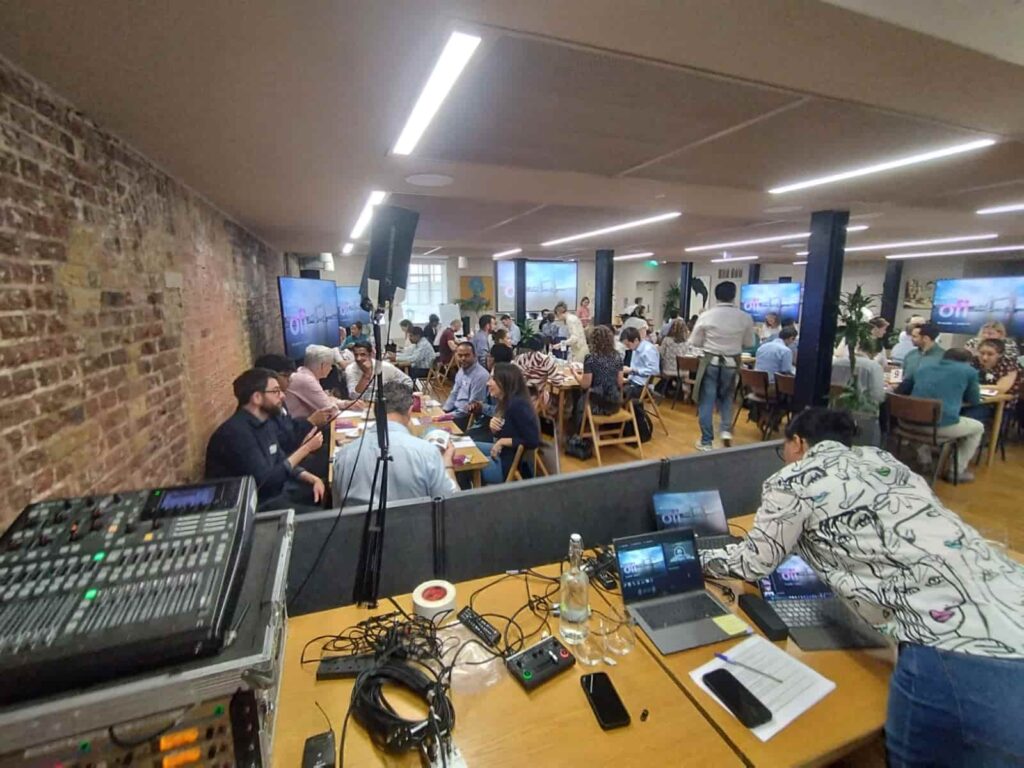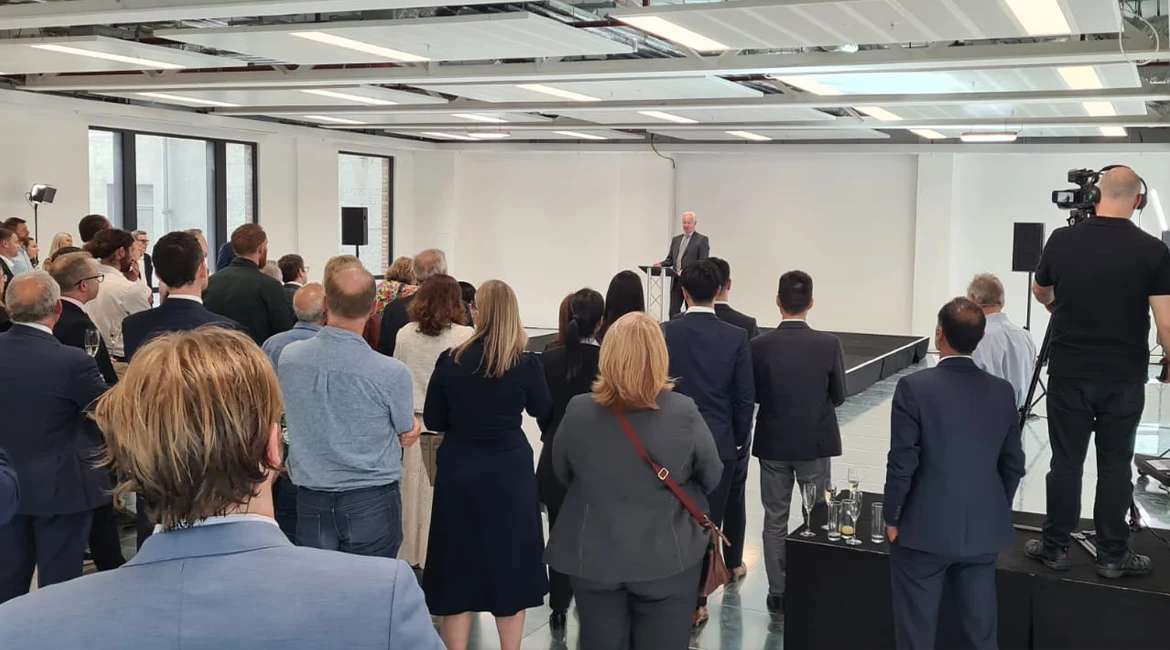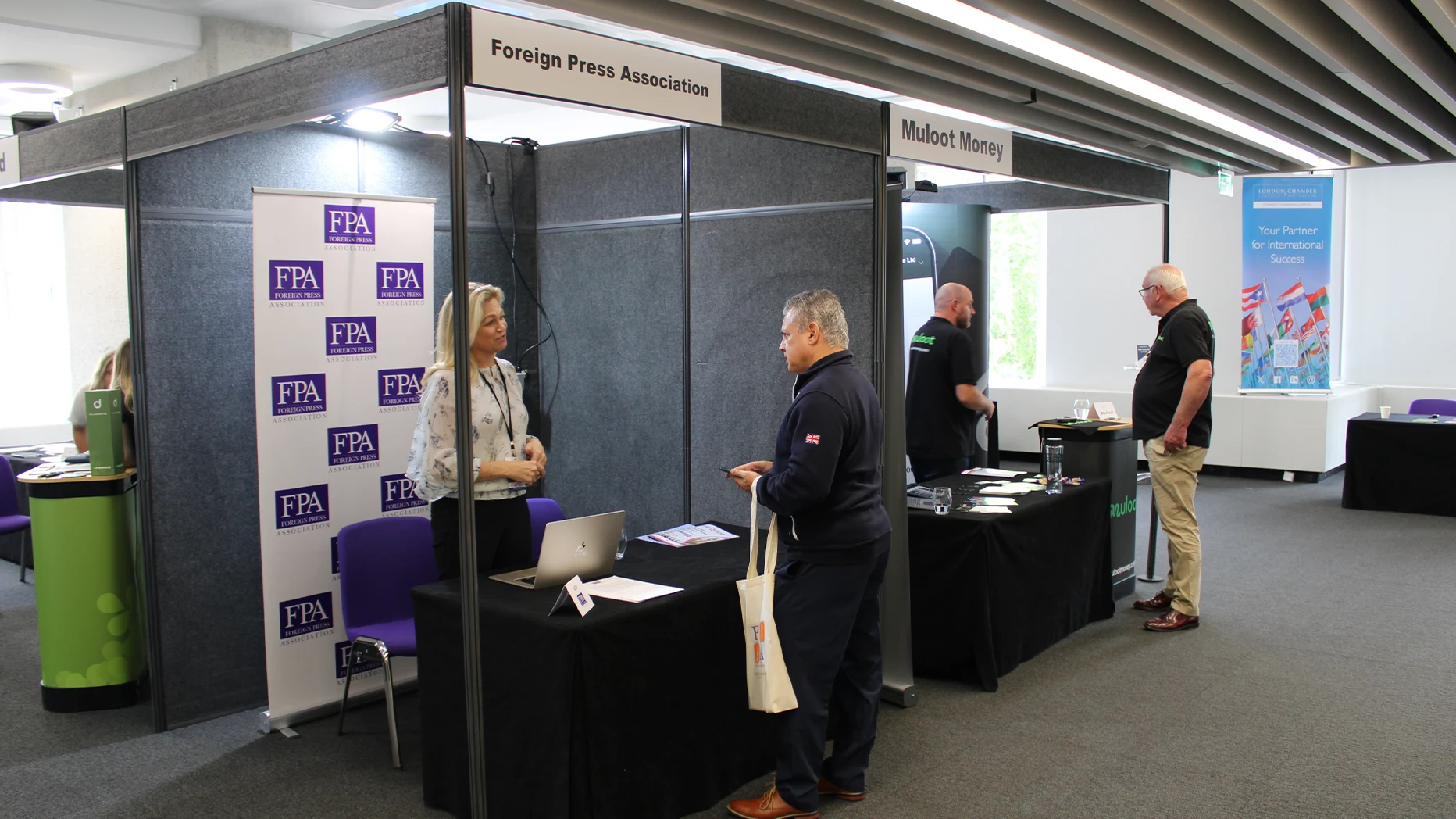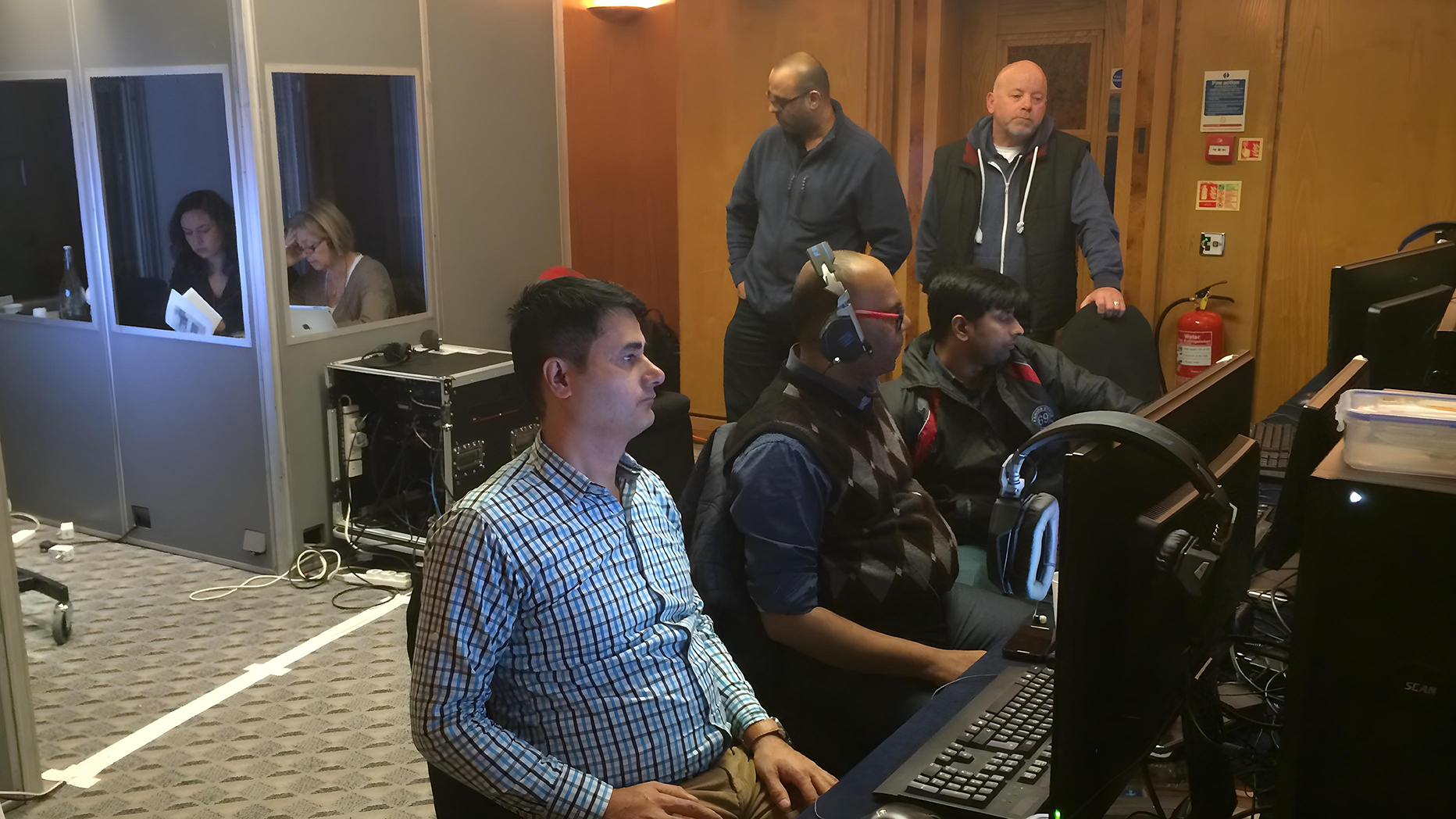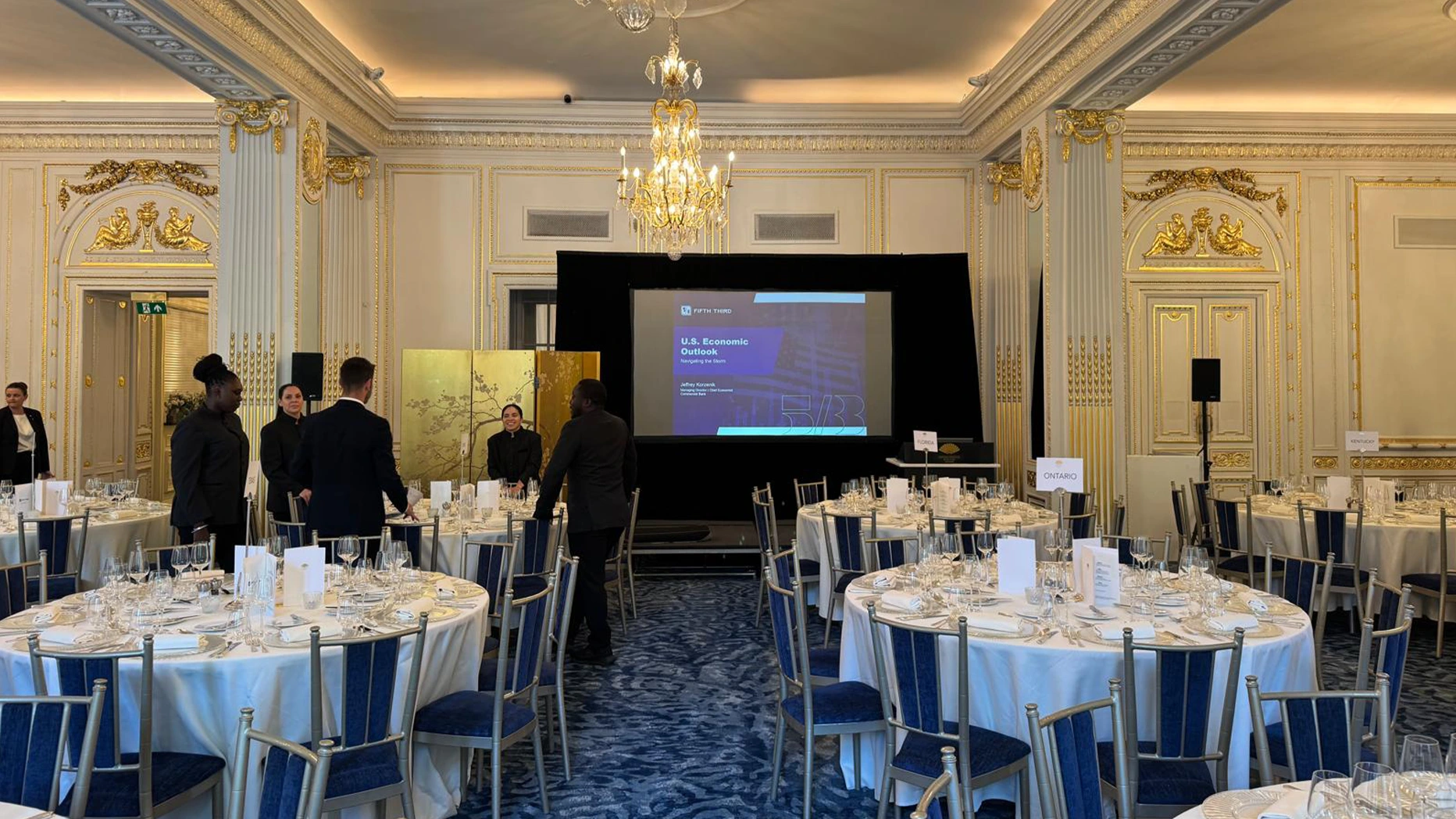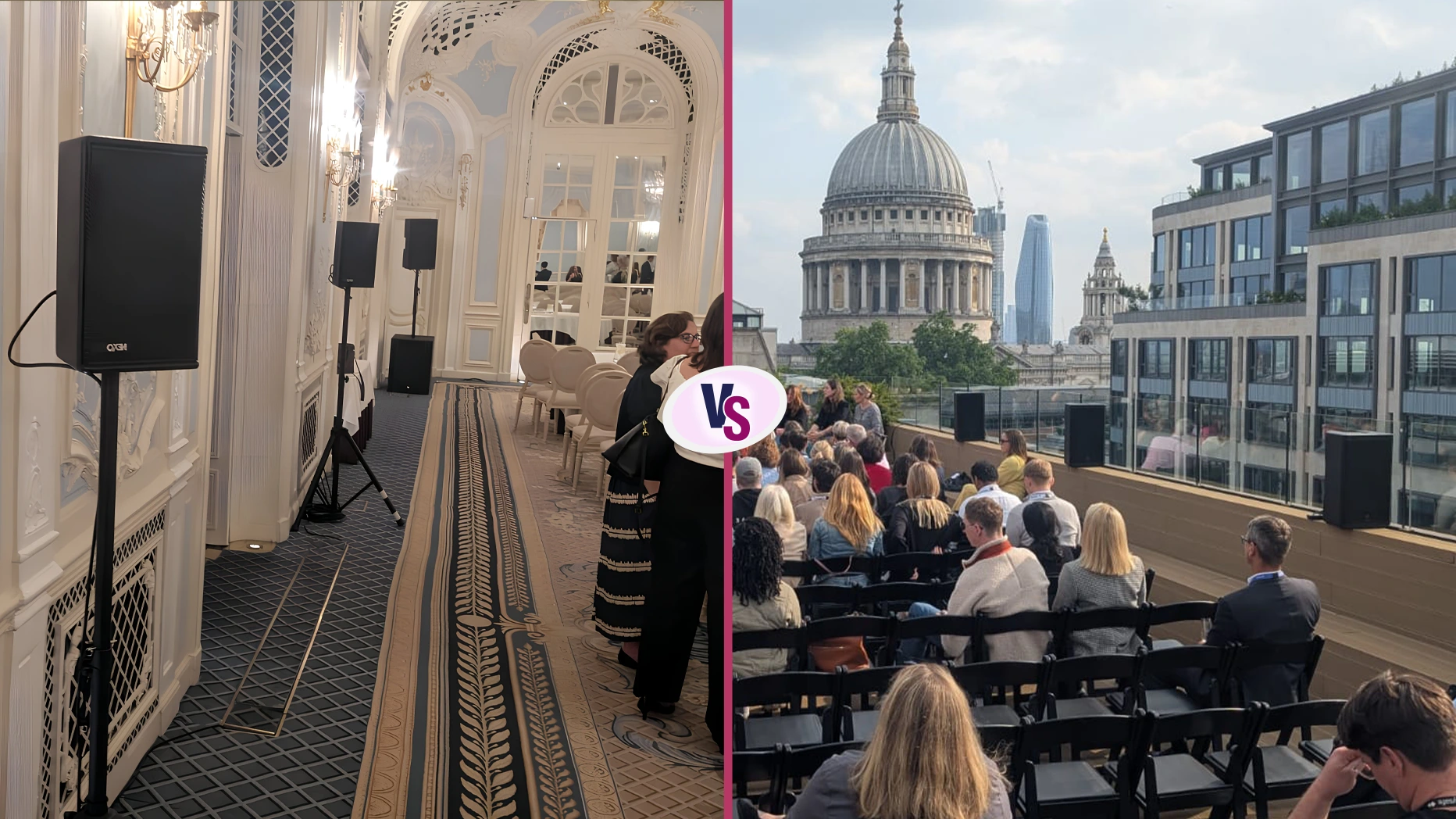When you walk into a conference room and hear crystal clear sound or see visuals on a screen that instantly grab your attention, that is AV equipment at work. Whether it is a wedding, corporate seminar, classroom, or concert, AV tools are the backbone of communication and audience engagement.
But what exactly is AV equipment, and why is it such a big deal in today’s events and business settings?
This guide covers everything you need to know: from the definition and examples of AV equipment to its many uses. You are in the right place if you are an event planner, a business owner, or simply curious about audiovisual technology.
AV in simple terms
AV stands for audio-visual. AV equipment includes any electronic tool that produces, transmits, or processes sound and visual content. That means everything from microphones and speakers to LED walls, cameras, and control panels.
Put simply, it’s the technology that helps people hear and see things more clearly, professionally, and interactively, whether they’re in the room or are joining remotely.
It’s no surprise the AV industry is growing fast. With advances in tech and rising demand for immersive, hybrid experiences, the global market is projected to grow at a CAGR of 6.1% from 2023 to 2024.
Why is AV equipment necessary?
Whether you are hosting a meeting or planning a large-scale festival, AV gear plays a key role in communication, engagement, and ambience. Below are some of the reasons why it matters:
- Enhanced Communication: Visuals and clear audio ensure your message reaches every audience member effectively.
- Stronger Engagement: People are naturally drawn to multimedia. Videos boost engagement; people respond better to multimedia than basic formats.
- Hybrid and Remote Ready: With virtual meetings, remote work, and virtual events becoming standard, AV tools are critical for seamless interaction.
- Professionalism: High-quality AV systems elevate your brand’s image and create memorable audience experiences.
Common examples of AV equipment
Here is a deeper dive into the most common types of AV equipment, broken down by category:
a. Audio equipment
Used to capture, amplify, and distribute sound.
- Microphones: Lavalier, clip microphones, handheld, wireless, and boundary mics.
- Speakers: Output amplified sound for live events or recordings.
- Amplifiers: To boost the audio signals before they reach speakers.
- Audio Interfaces: Used in studios to connect instruments to computers.
b. Visual equipment
Used to display video content or visuals to an audience.
- Projectors: Ideal for large presentations and cinemas.
- Monitors and screens: LCD, LED, 4K displays for visuals and signage.
- Video walls: Used in concerts, control rooms, and events.
- Cameras: HD/4K video cameras, PTZ cameras, document cameras.
- Visual Switchers: For multi-camera livestream setups.
c. Lighting equipment
Helps set the mood, focus attention, and elevate production quality.
- LED uplighting: Colour-changing lights placed around venue perimeters.
- Spotlights: Highlight presenters, performers, or displays.
- Wash lights: Cover wider areas with soft lighting.
- Gobos: Project custom patterns or logos on surfaces.
- DMX controllers: For programming and syncing complex light shows.
d. Control and integration tools
There are lots of tools used to coordinate multiple AV components.
- Control panels: Wall-mounted or tablet-based AV control interfaces.
- Matrix switchers: Route multiple AV sources to different outputs.
- Cables & adapters: HDMI, VGA, XLR, and audio jacks for connectivity.
- Signal processors: Enhance and clean up AV signals for better clarity.
What is AV equipment used for?
AV equipment is no longer a luxury; it is a necessity. From engaging audiences to delivering crystal clear communication, AV technology plays a key role across almost every sector today. Let’s explore how different industries are using AV to inform, entertain, and connect:
1. Corporate meetings and hybrid presentations
Today’s companies rely on AV tools to collaborate across offices and time zones.
- Wireless presentation tools.
- Interactive whiteboards.
- Boundary mics for boardrooms.
- Livestream capabilities for remote teams.
- Virtual whiteboard for brainstorming.
For example, a product launch event may include a stage with a mic system, an LED screen for slides, live streaming to YouTube, and audience Q&A via tablet integration.
2. Live events, concerts & shows
Events are brought to life through sound, visuals, and lighting.
- Massive speaker setups.
- Multi camera production for live feeds.
- Fog machines and lasers.
- LED wristbands synced to music.
- Real-time video mixing.
A great example is music festivals, where AV is used to sync fireworks, stage lighting, and audio for an unforgettable, immersive show.
3. Weddings & private events
AV helps create emotion and immersion during intimate events.
- Wireless mics for toasts and vows are increasingly popular.
- Custom lighting that matches the theme.
- Slide or video montages.
- Live DJ sets with synced lighting.
- Live streaming for guests who can’t attend.
Couples often rent portable projectors for pre-wedding video displays and pair them with elegant uplighting for their outdoor reception.
4. Education and training
AV in education goes beyond whiteboards; it’s about creating interactive and memorable learning experiences.
- Smartboards and touch screens that let students engage hands-on.
- Classroom amplification systems to reach large groups.
- HD cameras and mics for recording or broadcasting lectures.
- E-learning AV setups, including screen recording and live sessions.
- AR/VR learning stations for immersive simulations.
Example: A university installs a hybrid teaching studio with green screens, lapel mics, and multiple camera angles. It enables lecturers to deliver engaging lectures, whether it’s online or in person.
5. Retail, branding & marketing
AV helps brands capture attention in an oversaturated market, turning heads and driving engagement.
- Digital signage to display real-time promotions.
- Audio branding systems with curated music playlists.
- Touchscreen Kiosks for product exploration.
- Pop-up installations with video loops and lighting.
- Motion-triggered displays that respond to customer movement.
A fashion retailer launches a new collection using LED video walls at the storefront, paired with interactive fitting mirrors that display size options and suggestions.
6. Hospitality and tourism
Hotels, restaurants, and tourism companies use AV to enhance guest experiences and streamline operations. Some of the most common uses are the following:
- Conference room AV setups for business travellers.
- In-room entertainment systems with smart TVs and speakers.
- Digital concierge Kiosks for guest interactions.
- Outdoor projectors for rooftop movie nights.
- Background audio systems tailored to different zones.
A luxury resort offers interactive touchscreen guides in every suite, daily evening light shows by the pool, and a conference hall fully equipped for hybrid corporate retreats.
AV isn’t just equipment, it’s experience engineering
AV is not just a bunch of wires and screens; it is how you bring your message to life. A great AV setup does more than just make you hear and see it. It is the unseen force that shapes how people feel, respond, and remember your event. A well-designed AV setup brings your message to life with clarity, emotion, and impact.
It turns an ordinary gathering into a memorable experience. When your visuals are sharp, your sound is crystal clear, and your environment is immersive, your audience connects. So, if you are planning an event, a launch, or even upgrading your space, don’t treat AV as an afterthought. It’s not just about being heard or seen; it’s about being remembered.
FAQs
What Is AV Equipment In Simple Words?
AV equipment includes any tool that helps you hear audio or see visual content more effectively, like speakers, screens, projectors, and microphones.
Can I Rent Av Equipment For A Day Event?
Yes, AV rental companies offer daily or weekly rentals for microphones, projectors, lighting, etc. It often comes with setup and technical support.
What Is The Difference Between Consumer And Professional AV Gear?
Professional AV equipment is built for durability, long use, and higher performance, often used in events, broadcasting, or corporate offices.
Is Wireless AV Available?
Yes, modern wireless AV systems are reliable and often easier to set up. However, always test for signal interference in large venues or multi-device environments.
